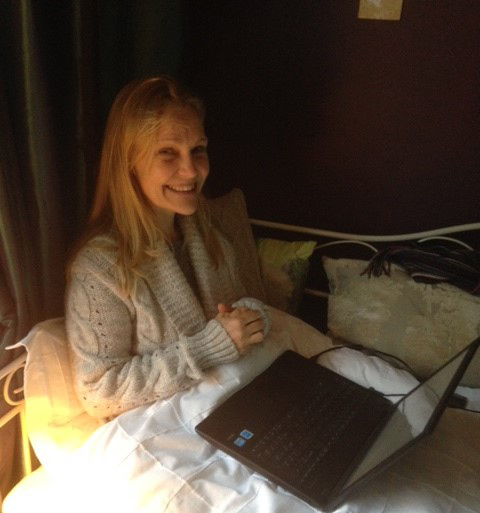Kirsten Miller, 2016 winner of the Wilbur Smith Adventure Writing Prize for an unpublished manuscript, has been travelling in Spain and Ireland over the last few weeks. You can read the first instalment of Kirsten's adventure in Barcelona here. Kirsten has shared her thoughts and feelings from the second half of her trip in Ireland with us. Read on to find out more...

Leaving Waterford for Dublin, raindrops pepper the train window like tiny jewels. Beyond are stone walls, a parking lot, an ancient bridge. The pearl-grey sky lies flat above ordered trees that skirt the edge of a fallow field. As my first week in Ireland has revealed, every day is not the same. There has been sun and wind, mist, rain, blue sky, and aching cold.
I chose both Barcelona and Dublin for the purposes of research for my fictional narrative. Little did I realise how strongly the narratives of each of these cities are tied into their own historical searches for independence and identity. I walk from Heuston Station, across the River Liffey, and along the quays. In Dublin my room is at the top of an iron staircase in the attic of a building in Gardiner Street. I have come to find the places where the Irish supported South Africa’s liberation from apartheid, and, if it is possible, an inkling of the loneliness of the life of an exile. The Irish Anti-Apartheid Movement retained their support for the freedom of the people of South Africa for over thirty years, with activists and donors that included artists, politicians, professionals and academics. I visit the Dunnes Stores, Trinity College and the site of the old stadium in Lansdowne Road. In a serendipitous encounter, I shake the hands of a roomful of African immigrants who have left their home countries to seek asylum here. I find parallels in Ireland’s own history, in the stories told by the art on the streets.
Despite having great-grandparents who were born and died in Ireland, my sense of cultural alienation is unexpected. My internal landmarks are different, as are my symbols and references. The road map reveals nothing of what this city is. My eyes take in the new as I sink more deeply into the purpose of travel, and my own research. I am here to stretch my imagination and empathy, in order to enter the lives of others.
On my final day in the city, before I head back to Barcelona, I meet up with an old friend from university. She introduces me to Bob, an artist and a Dubliner by birth. Bob shows me pictures of his work, beautifully cast and painted forms, caught in lovely colours. He walks us through Temple Bar. Here Handel’s Messiah premiered in Fishamble Street, there is a bookshop I would never have noticed. Here are traces of the old Viking city, and there a gallery I couldn’t find on my own. Later he pauses and points to life-sized sculptures through the window of a shop, now closed. “That’s my uncle’s work,” he tells us. His cousin, also an artist, has won the Turner prize. Bob leaves us in the early evening. As he ebbs away, merging with the layers of history, art and complexity that he knows as home, I envy the ease, the fluidity with which he navigates this city and culture that I, as a stranger in a strange land, can never completely know.
Thank you to The Wilbur and Niso Smith Foundation for this incredible opportunity for research, development and writing.
- Kirsten Miller
